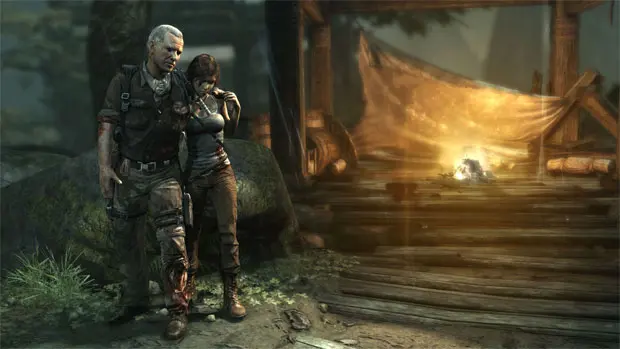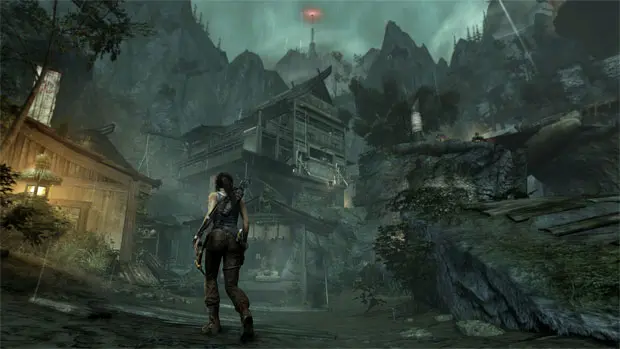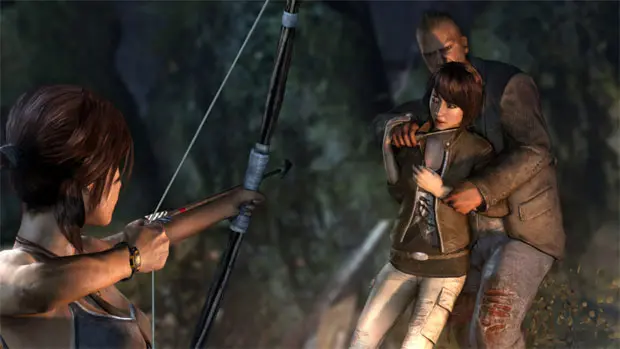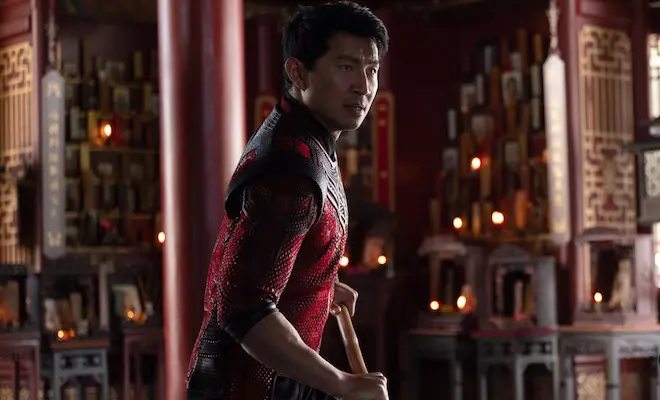 I’ll admit this right off the top: I was never a Tomb Raider fan. Sure, I’ve played a few of the early Playstation titles in my day, but never for more than an hour or so, and I still have a few of the later games in my library, even though I have never played them. I don’t know, I guess I just couldn’t get into a game that put puzzles over action, and running and jumping over combat. That was me. That was then.
I’ll admit this right off the top: I was never a Tomb Raider fan. Sure, I’ve played a few of the early Playstation titles in my day, but never for more than an hour or so, and I still have a few of the later games in my library, even though I have never played them. I don’t know, I guess I just couldn’t get into a game that put puzzles over action, and running and jumping over combat. That was me. That was then.
In 2010, Square Enix announced that longtime developer Crystal Dynamics was rebooting the franchise as a whole, giving the world a younger Lara Croft, and a game focused on her origin–a reimagined origin from the many that had come before (seriously, Lara Croft has been retconned more times in her 17 years than Batman has in almost 75 years.) And the first screens to be shown verified that this was a bold new, hungry, desperate Lara Croft, and a new Tomb Raider for a new generation.
Finally, after three years of screens and footage and news clips, the rebooted Tomb Raider is available and let me tell you, it was well worth the wait.
Tomb Raider opens up with a 21-year old Lara Croft on an expedition to find the lost island of Yamatai, the last resting place of the mythical Japanese Sun Queen, Himiko. The expedition is part of a reality show, and at the insistence of our heroine, the ship carrying the film crew and her longtime friends, ventures into a dangerous region known as the Dragon’s Triangle in search of the fabled land. Of course, with a name like that, things go wrong and Lara and crew are hit by a massive storm that smashes them into an island. Before anyone can regroup and get their bearings, the survivors are attacked by a mysterious group of people called the Solarii and Lara Croft finds herself hanging by her feet next to a few similarly hung corpses in a dark, gory dungeon-like cave.

What follows is easily 15 to 20 hours of some of the best gameplay in this console generation. We see Lara first as a fragile, rich girl with the intelligence to find a place that other explorers never could, and then we see her forced to do things that no person should ever have to do. A lot has been said about Lara’s fabled “first kill,” and it is a very brutal scene. A man tries to “take advantage” of a restrained Lara; she breaks free and fights back, which leads to a wrestling match and a gun, and a single shot, which happens to vacate the man’s brain pan in one of the most wrenching video game scenes in recent memory. As Lara stands and watches the man die, we see the true origin of an icon, and the birth of a survivor.
The brutality doesn’t end there. Crystal Dynamics have gone out of their way to put Lara Croft through the some of the worst situations imaginable. Early on, she is impaled by a piece of rebar, shot in the arm, burned by flames and by hot steam pipes. As the game progresses, she is drenched by fierce storms, frozen by snow, and even has to wade through a river of blood to escape death. In other words, the game does not take it easy on Ms. Croft.
But instead of making her the victim, each encounter makes her stronger and fiercer and gives her purpose to overcome the obstacles and to get her and her friends off the island. Sure, she goes from innocent intellectual to brutal killer too fast, but given the scenario she is put in, she has to. And the developers pull it off rather well.
In addition to the sheer brutality, there is also some clever, if not overly simple, puzzle solving required to move the story along, and there are optional tombs to raid. Yamatai is full of things to collect like documents, and journals, GPS markers and trinkets, each with a backstory that helps weave the tapestry that makes up the story of the game. Also, for each relic and artifact that Lara finds, we are privy to her historical explanation, which is nice. Learning is always fun.
Lara does an inordinate amount of climbing and scaling and acrobatic stunts, but it honestly feels more real than the parkour-like running, jumping and climbing elements of other games like this. Well, real for a video game world.

Also, Lara is solo for 99% of the game. She doesn’t crack wise one-liners or have anybody to explain things to. The story moves along with the occasional meet up with a crewmember, or over-the-air conversation via a two-way radio. For the most part, Lara is alone, and that is something that games like recent Uncharted and Resident Evil titles have abandoned. It is refreshing to get back to the “me against the world” feeling in an adventure/action game.
The visual look of Yamatai is amazing. From the frost-covered mountains, to the darkest caves, to the shantytowns and military installations to the Japanese temples, Yamatai has many different locales and all of them look incredible. The lighting effects are top notch and the frame rate never drops below 60 FPS.
Character models look great, too. Lara has traded in her shorts and busty tank top for a more modest cargo pants and double-layered cami ensemble. And her tools and weapons progress as they are acquired and upgraded using salvage taken from crates and fallen enemies. The progression of Lara Croft’s appearance is very noticeable by the end of the game as the innocent girl has been replaced by the hardened, fearless adventurer. Any way you shake it, the visual direction of Tomb Raider is as beautiful as its lead character.
The voice acting is well done, with actress Camilla Luddington (Grey’s Anatomy, Californication) taking over the voice duties for Lara Croft. Luddington fits the role well, giving the voice an injection of youth, which represents what Crystal Dynamics was shooting for. The soundtrack is also top-notch, using tried and true orchestration and drumbeats to give an audible companion to the action on screen.
One of the biggest issues in the new Tomb Raider is in the combat. More emphasis has been placed on combat than in games past. Lara starts off with a bow and arrow, and gradually collects an assortment of pistols, pick axes and rifles to aid in her journey. The shooting is third person and is executed splendidly, especially the bow work. I truly enjoyed getting off silent headshots from far distances with the bow.

What separates the combat in this game from the games it will inevitably be compared to is that fighting seems more sandbox/open world. In other games, the player will come to a clearing that has elements of cover set up, which tells the player that a gun fight is about to break out. In Tomb Raider, cover is environmental and can be destroyed, and enemies are scattered more frequently (even it if it’s just one or two sentries walking a path or guarding a door), which gives a fluid feeling to the combat and stealth/sneaking aspects of the game. And not every encounter is a gunfight. There are plenty of instances where I used my pickaxe to sneak up and take out guards, or even use things in and around me to get the job done. It was refreshing to know that not every conflict had to be resolved by pulling a trigger.
While the campaign mode is fantastic, multiplayer is anything but. The developers have seemingly tacked on three games modes (Team Deathmatch, Capture the Flag, Survivor) and a handful of maps and implemented a character level up based on XP, which is all pretty standard stuff these days. As such, there is no reason to give the multiplayer any of your time, as there is zero uniqueness to the endeavor. That being said, if Crystal Dynamics hadn’t included it, people would have cried foul, so it was literally a “damned if you do, damned if you don’t” scenario. It was a no-win situation, but luckily, playing the multiplayer mode is a choice and I choose to never do it again.
After years of gradual stagnation, someone had the grand idea of rebooting one of the most beloved gaming franchises in history, and it works. The game looks great, sounds great, plays great, and taken as a whole, is a great experience. Tomb Raider is easily the frontrunner (It’s only March, I know) for 2013 Game of the Year. Save for a weak multiplayer element, fans of the action/adventure game genre, as well as fans of shooters and exploration/puzzle games, will find something incredible here. The fact that it is also the origin of one of gaming’s veritable icons is just icing on the cake.
Shop for Tomb Raider on Xbox 360, Playstation 3 or the PC at Amazon.com (March 5, 2013 release date, rated M for Mature)



